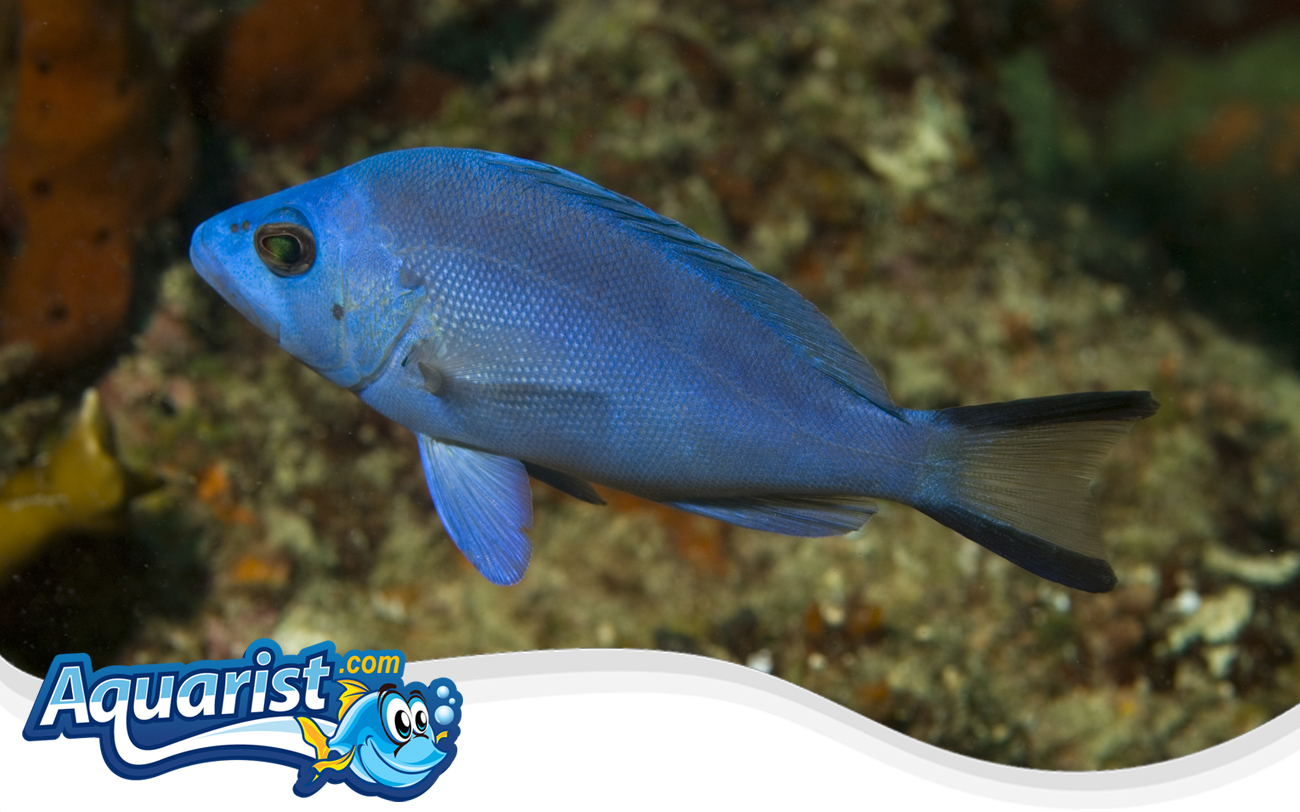Overview
- Native to the tropical western Atlantic, particularly around the Caribbean and Gulf of Mexico.
- Renowned for its deep sapphire-blue coloration, giving it a jewel-like appearance.
- A relatively small but bold fish, often seen patrolling rocky crevices and coral structures.
- Thrives in well-established reef tanks with plenty of hiding spots.
Feeding
- Carnivorous diet, preying on small crustaceans and tiny fish in the wild.
- Readily accepts frozen mysis shrimp, brine shrimp, and high-quality marine pellets.
- Offering a varied diet enhances coloration and promotes active foraging behavior.
- Requires one to two feedings per day to maintain energy levels.
Habitat
- Commonly found in coral reefs, rocky overhangs, and areas with abundant hiding places.
- Prefers aquariums with a mix of live rock, caves, and shaded regions to retreat when feeling threatened.
- Moderate to low water currents replicate its natural reef habitat.
- Appreciates stable conditions with high water clarity for optimal health.
Fish Care
- Optimal water temperature: 74-80°F (23-27°C).
- pH level: 8.1-8.4, with a specific gravity of 1.023-1.026.
- Resilient but benefits from pristine water conditions and regular maintenance.
- Best kept in an established tank with minimal fluctuations in water parameters.
Compatibility
- Semi-aggressive; best housed with other assertive tank mates to avoid bullying.
- May show territorial behavior, particularly toward similar-looking basslets or small fish.
- Compatible with most reef-safe species, including clownfish, tangs, and wrasses.
- Should not be housed with timid fish that may become targets of harassment.
Aquarium Behavior
- Active and inquisitive, frequently patrolling its preferred rock formations.
- Can be territorial if space is limited, making larger aquariums a better choice.
- Displays interesting color shifts under different lighting conditions.
- Providing an enriched environment with caves and hiding spots encourages natural behaviors.


